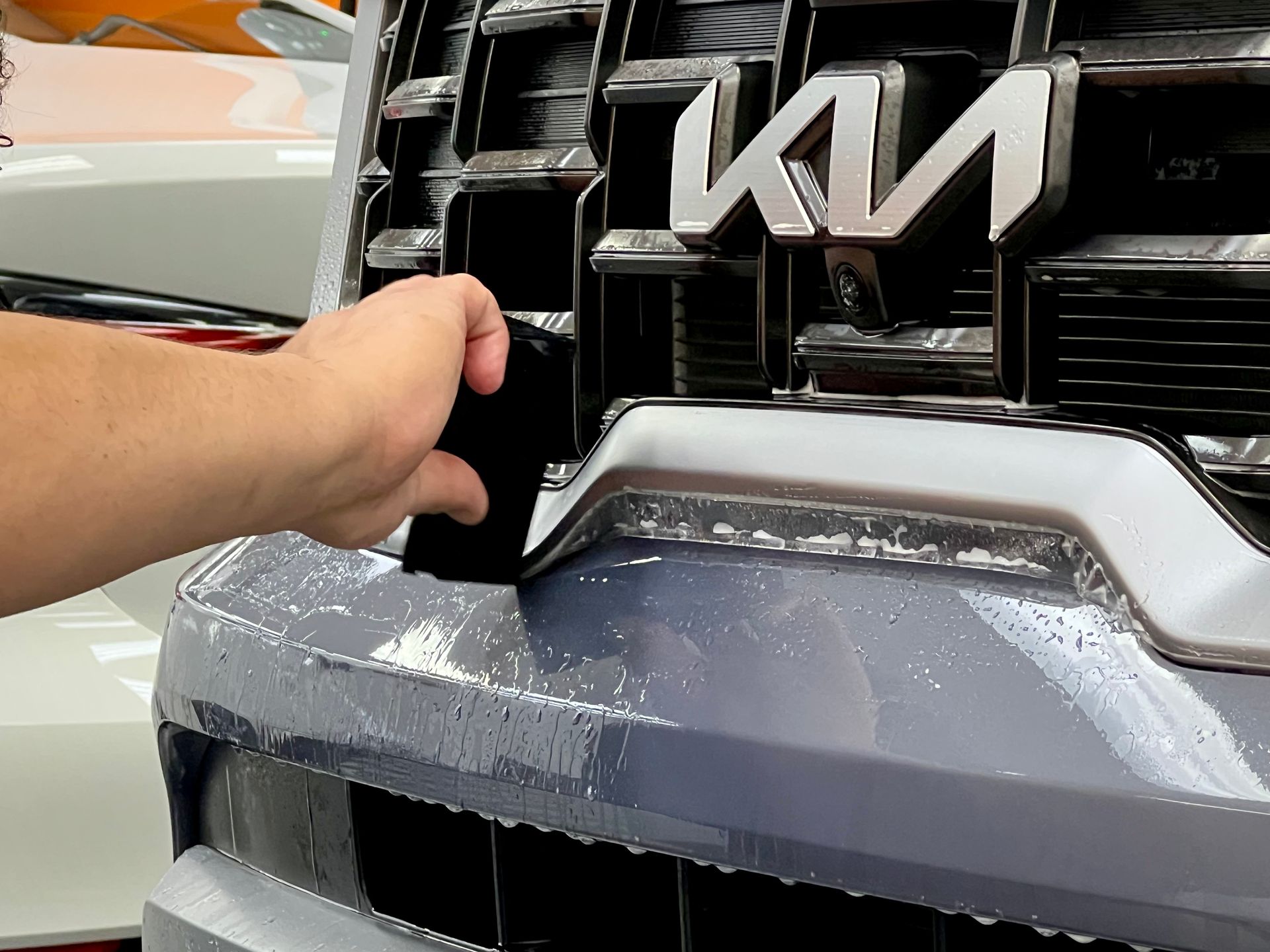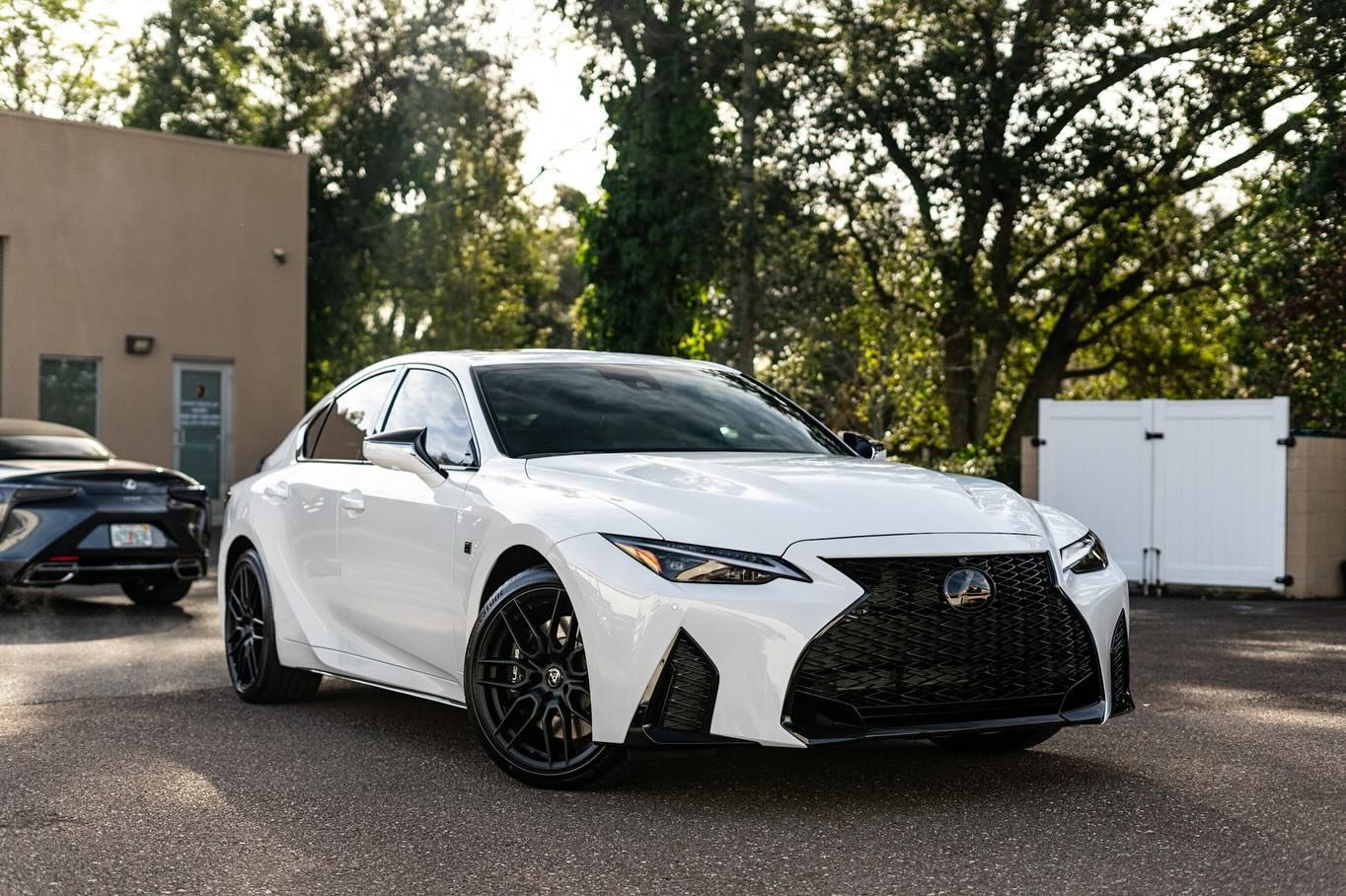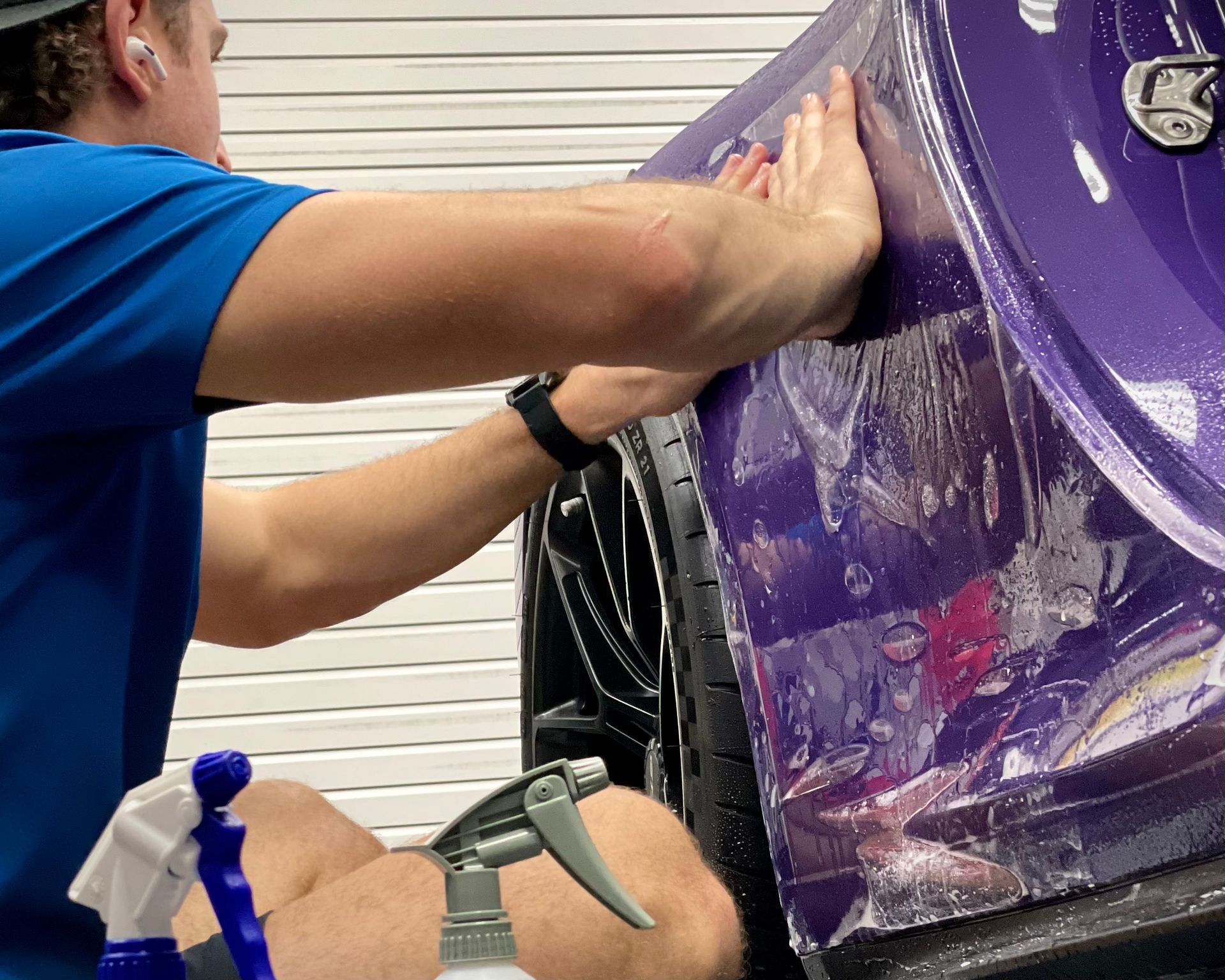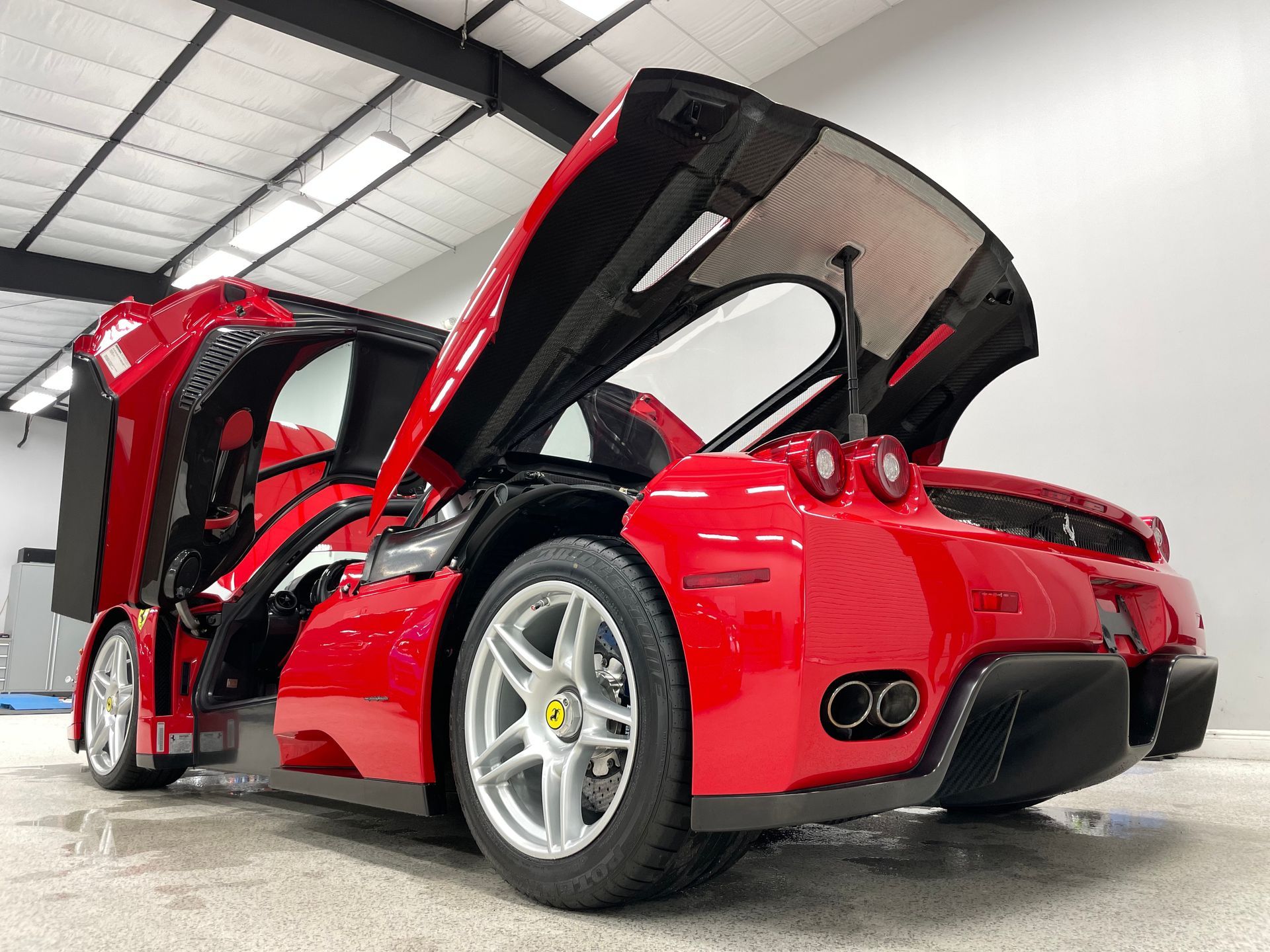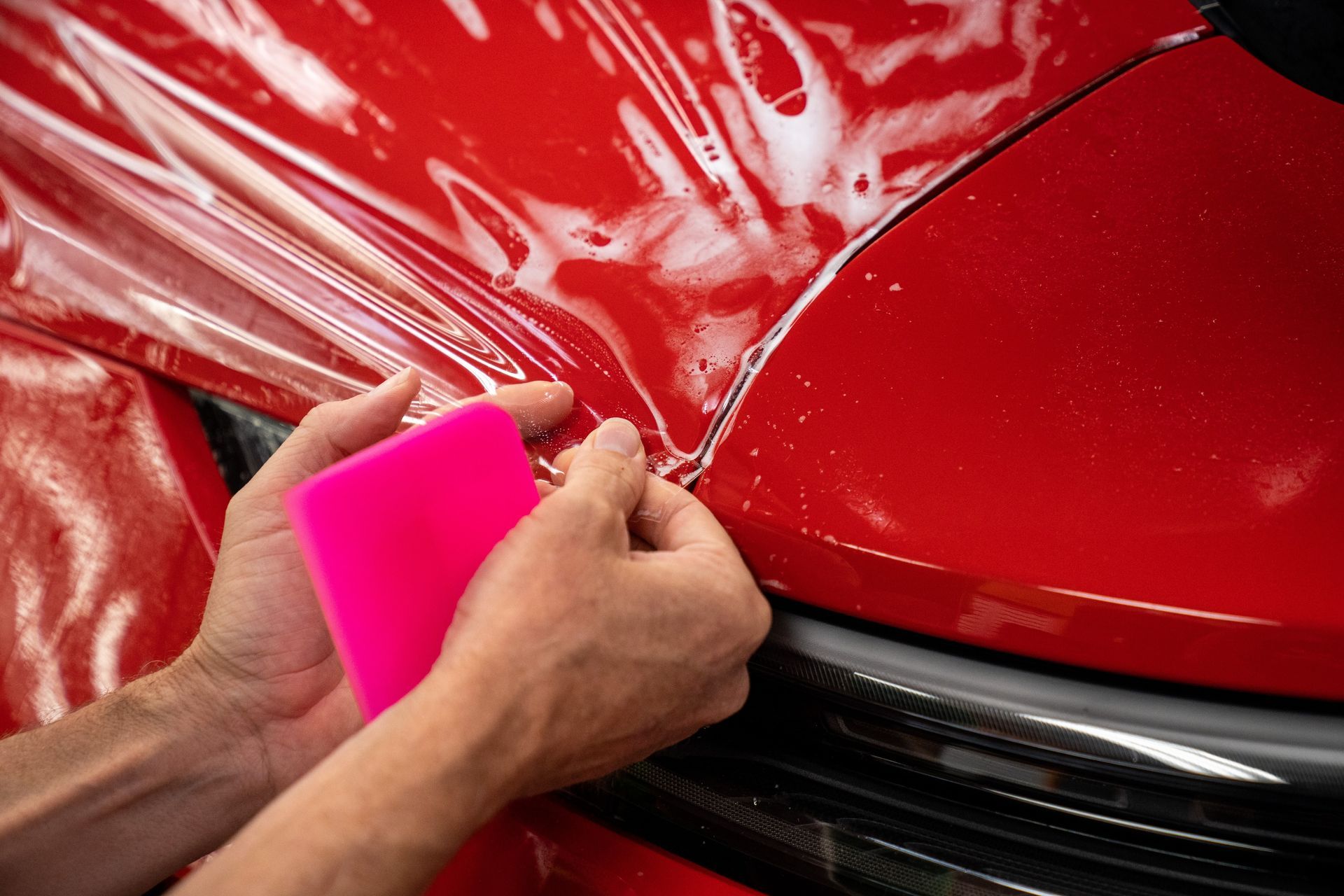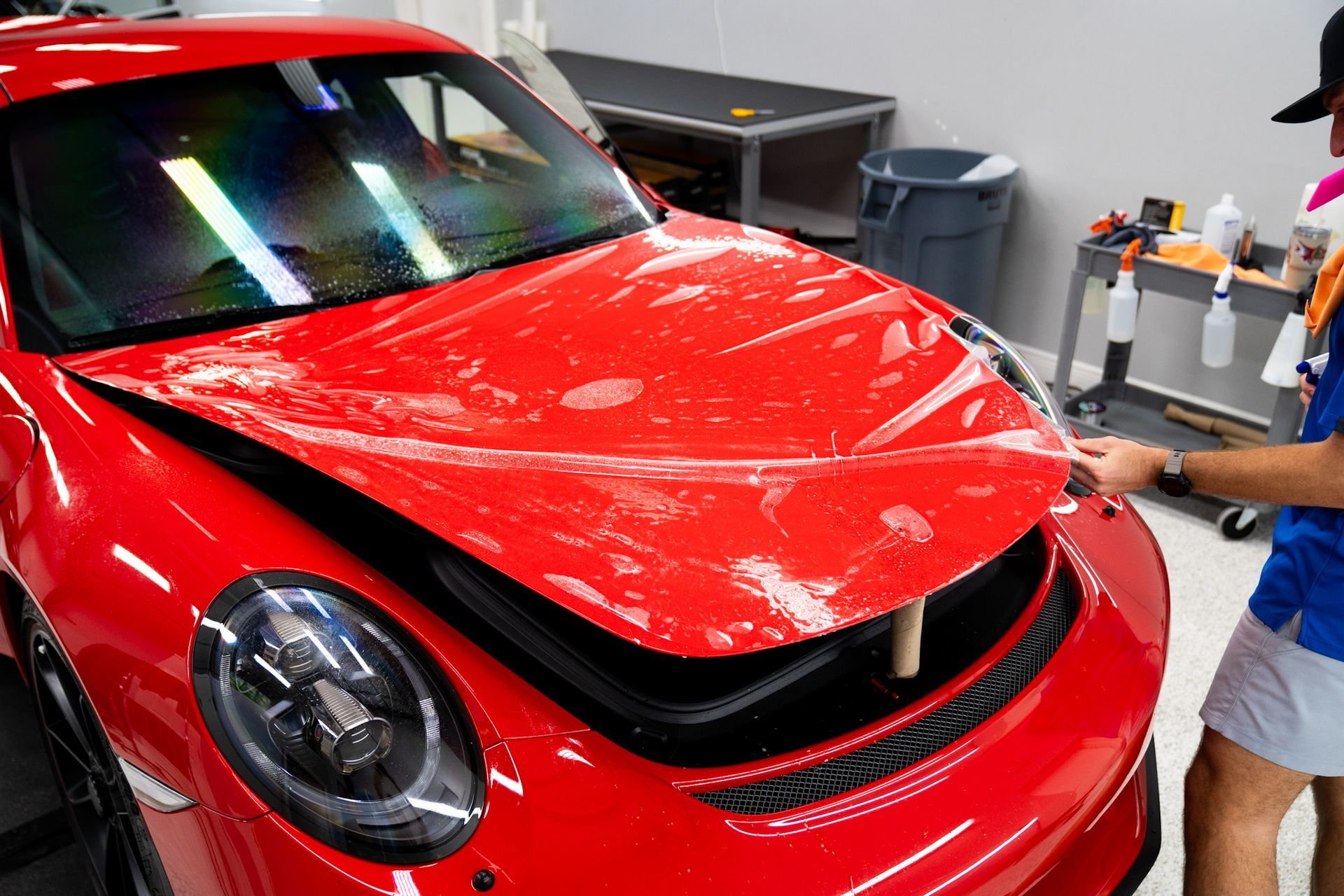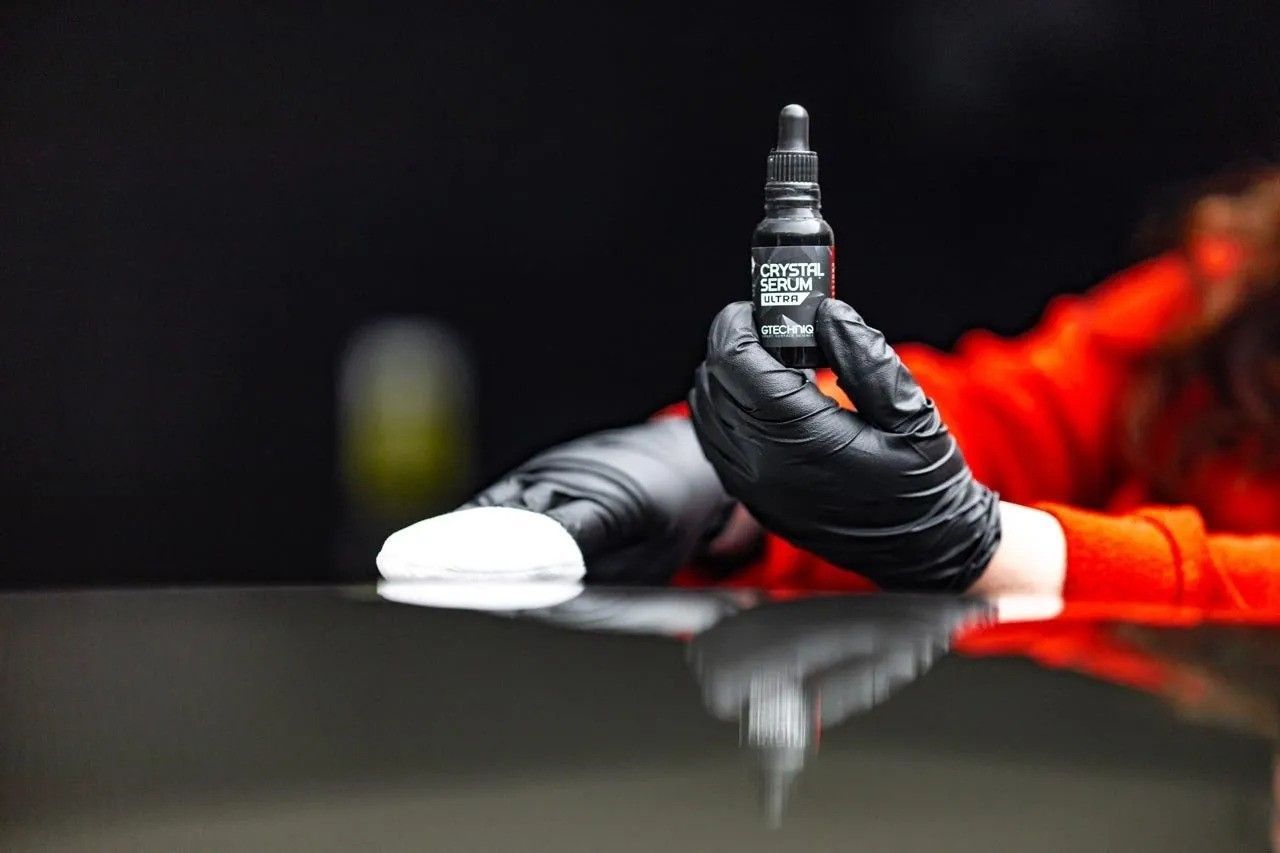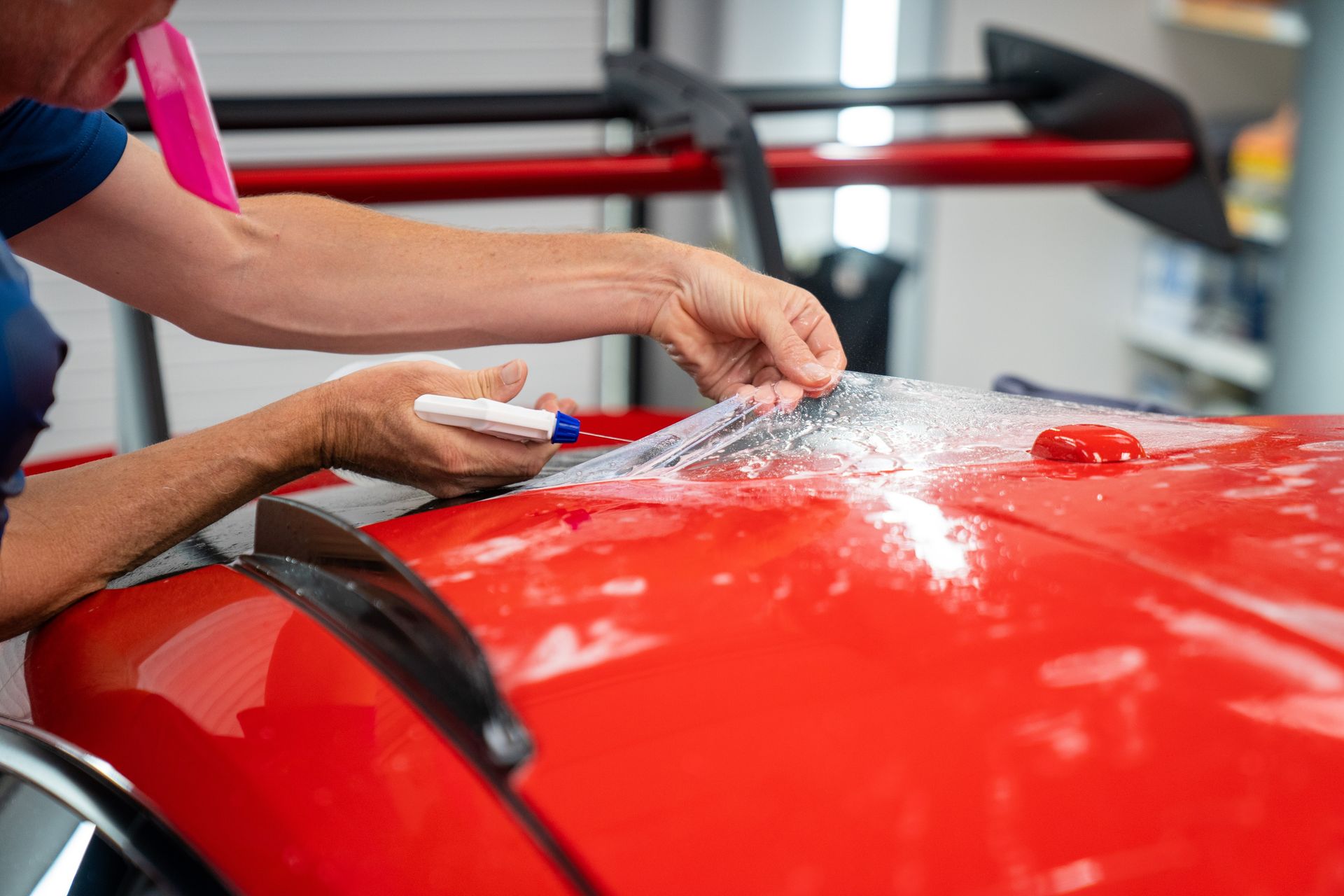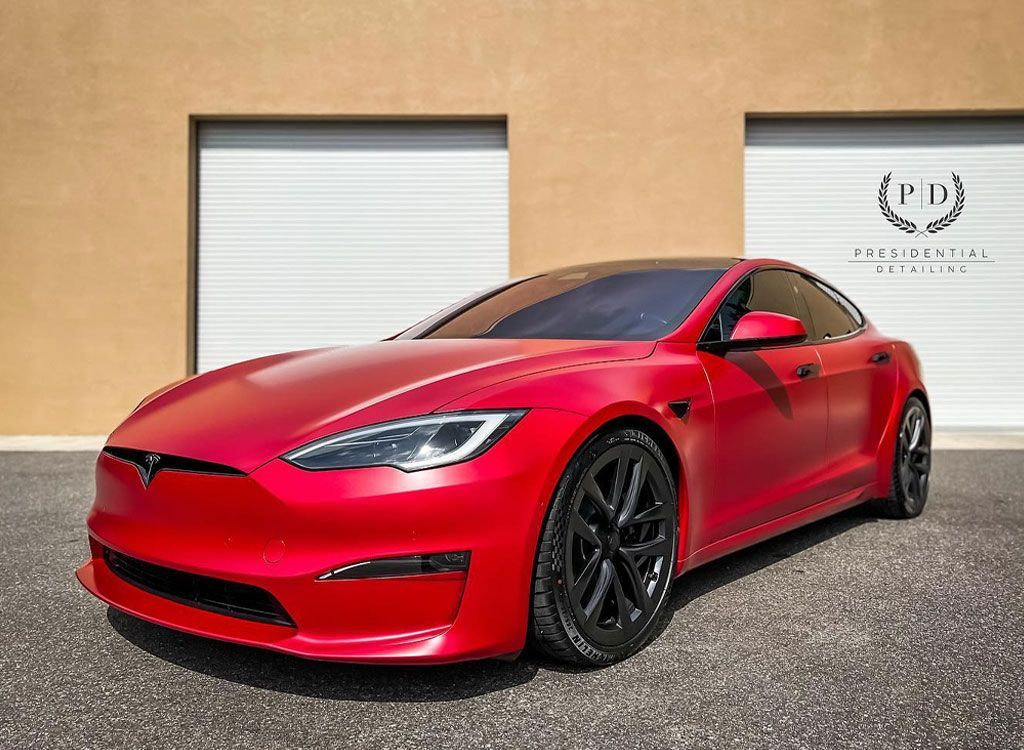The Effect of Extreme Weather Conditions on PPF Durability: Impact and Performance Analysis
CALL (813) 723-9679
GET A FREE ESTIMATEImagine stepping out into your driveway early one winter morning to find your car coated in a thin layer of ice and road salt residue—a common sight in regions facing harsh winters. But what happens to that trusted layer of paint protection film under these trying conditions? If you're like many who value their vehicle's longevity and appearance, such thoughts have crossed your mind more than once. We've dug deep to uncover the truth about PPF durability against extreme weather.
Extreme weather conditions, such as prolonged exposure to intense sunlight or fluctuating temperatures, can degrade the paint protection film over time, leading to issues like yellowing, peeling, or reduced effectiveness. To minimize these effects, consider parking your vehicle in shaded areas or using a car cover to protect the paint protection film from harsh environmental elements.
Extreme Weather's Impact on PPF
Extreme weather conditions truly challenge the durability of paint protection film. Hailstorms are a force to be reckoned with, leaving dents and scratches not only on your car's paint but also on the paint protection film. Imagine this: tiny balls of ice raining down from the sky at high speeds - it's no wonder they can wreak havoc on your vehicle's exterior. So, every time it hails, your PPF acts like a shield, taking the hits intended for your car's paint. Additionally, when there's heavy snow or rain, the film must bear the brunt. The moisture, particularly from rain, can weaken the adhesive properties of the film, making it more susceptible to bubbling or peeling over time.
In regions where road salt is used to de-ice roads during winter, that same snow and ice carry corrosive elements that eat away at the film's integrity. The relentless impact of these conditions on your vehicle's exterior is evident. For a frame of reference, a paint protection film is like a loyal guardian protecting your car from all sorts of elemental attacks. But even the mightiest guardian needs a little help when faced with hailstorms and copious amounts of water or snow. Investing in high-quality paint protection film becomes essential—truly putting up a sturdy shield to safeguard your vehicle against nature's toughest blows.
UV Radiation Effects on Paint Protection Film
Imagine paint protection film as the shield that protects your vehicle's paint. Now, picture UV radiation as the mighty force trying to break through that shield. UV rays are a powerful foe for PPF, causing it to undergo several detrimental changes over time when exposed to direct sunlight for extended periods. One of the most telltale signs of prolonged exposure to UV radiation is the yellowing and brittleness of paint protection film. This not only impacts its appearance but also significantly reduces its effectiveness, diminishing the protective layer that shields the car's paint from damage. Even for films with UV-resistant top coatings, there is a looming threat of degradation over time.
Therefore, it becomes crucial to understand how different paint protection film products fare against UV radiation. High-quality paint protection films with effective UV-resistant properties can block up to 99% of UV rays. This remarkable capability not only extends the film's lifespan but also contributes to the sustained protection of the vehicle's paint. The ability of advanced paint protection film formulations to withstand such high levels of UV radiation underscores their importance in preserving the integrity and appearance of the car's exterior.
When contemplating the impact of UV radiation, an essential aspect to consider is how regular inspections and specific parking practices play a pivotal role in mitigating its adverse effects. By proactively monitoring the condition of the PPF and strategically parking your vehicle in shaded areas, you can effectively alleviate some of the damaging repercussions posed by UV radiation. The battle between paint protection film and UV radiation is a constant one, with significant implications for both protective film durability and vehicle aesthetics.
Understanding these effects empowers car owners to take proactive measures to safeguard their investment, ensuring that their vehicle maintains its sleek appearance over an extended period of time.
Heat and Cold: PPF Durability
Extreme temperatures can significantly impact the performance of paint protection film. When the temperature rises, the paint protection film tends to soften due to the heat, making it more susceptible to damage from minor impacts. Therefore, in high-temperature environments, it's crucial to be mindful of this increased vulnerability. Additionally, prolonged exposure to high temperatures can weaken the adhesive properties of the film, potentially leading to edge lifting, where the film starts peeling at its edges, compromising both its protective capabilities and aesthetic appeal. For example, if your car is parked in scorching heat for an extended period, the softened paint protection film becomes more susceptible to scratches from small stones or debris. The air pressure increases as you drive away, further harming the already compromised adhesive.
Now let's talk about the effects of the cold. When exposed to extremely low temperatures, the paint protection film becomes stiff and more vulnerable to cracking. The material contracts under cold conditions, increasing the risk of tearing, particularly around edges and corners. Both extreme heat and cold subject your car's paint protection film to stress and potential damage. In areas with significant temperature fluctuations, the film will expand and contract more often, further stressing both the material and the adhesive. In regions where temperature swings are frequent and drastic, understanding how these elements impact paint protection film longevity is essential for informed decision-making regarding car protection.
Material Quality vs. Weather Resistance
The material quality of paint protection film plays a pivotal role in how it withstands the elements. Leading brands have elevated industry standards by engineering multi-layer constructions that provide superior resilience to environmental strains. These advanced constructions are designed to withstand the varying impacts of extreme weather conditions, ensuring longevity and optimum performance.
High-quality paint protection films are generally thicker, offering enhanced durability against physical impacts such as rocks, road debris, and gravel. This thickness creates a strong shield for your car's paint, which is crucial for shielding it from potential damage from harsh weather conditions and daily commutes. The inclusion of advanced top coats on these premium films significantly bolsters their scratch and UV resistance. Conversely, lower-quality films often struggle to hold their ground under severe weather conditions, exhibiting signs of wear such as yellowing, peeling, and decreased transparency at a far quicker rate compared to their higher-end counterparts. These issues not only compromise the visual appeal of your vehicle but also diminish the protective capabilities of the film.
Under the duress of extreme weather, subpar paint protection films may be prone to failure, leaving your vehicle's paint vulnerable to damage from UV rays and environmental pollutants. It's akin to comparing an umbrella made from flimsy fabric versus one with sturdy construction during a heavy storm - the difference in protection is stark. It becomes evident that investing in high-quality paint protection film not only provides long-term protection for your vehicle but also offers peace of mind in challenging weather conditions. The durability and resilience of premium PPF materials ensure that your vehicle's paint remains shielded from the harshest elements it encounters during daily use and adverse climate events.
So, when evaluating the impact of extreme weather on paint protection film durability, considering the material quality is paramount. Investing in a high-quality PPF ensures that your vehicle maintains its pristine appearance while being safeguarded against nature's relentless onslaught. When you take this careful approach to selecting a paint protection film for your vehicle, you're not just investing in its appearance; you're securing its protection against unpredictable environmental challenges.
Long-Term Performance in Adverse Conditions
When it comes to paint protection, the impact of extreme weather isn't something to be taken lightly. A paint protection film has proven to be a strong defense against rocks, road debris, and scratches, but how it holds up through harsh weather conditions over time is equally essential. Imagine an automobile wrapped in PPF battling harsh sun exposure, heavy rain, snow, and fluctuating temperatures. How well would the film hold up through such exposure?
Proper maintenance and initial installation quality play pivotal roles in determining the longevity of paint protection film under adverse conditions. Routine inspections during extreme conditions provide an opportunity to catch and fix minor damages before they escalate, significantly extending the life of the PPF. While high-quality paint protection film can last up to 3-7 years even in adverse conditions with proper care, lower quality films may only survive 1-2 years under the same circumstances due to differences in material composition, thickness, and overall durability.
Regular cleaning habits also affect the performance and lifespan of paint protection films. Using pH-neutral cleaners and avoiding harsh chemicals are crucial to maintaining the integrity of the film over time and preventing premature degradation caused by chemical reactions with aggressive cleaning agents. In addition to cleaning and inspections, driving habits also matter. Vehicles that undergo intense use or are frequently exposed to extreme environmental conditions may require more frequent checks and maintenance to ensure the ongoing functionality of the film. Car owners must consider these factors in their maintenance schedule to effectively protect their investment.
While paint protection film is designed to withstand various weather conditions, its long-term performance greatly depends on diligent maintenance efforts and the quality of the initial installation. Adhering to a routine inspection schedule, employing proper cleaning methods, and understanding how driving habits impact wear and tear can help car owners effectively extend the life of their paint protection film, even in adverse conditions.
Evaluating Overall PPF Lifespan
When examining the overall lifespan of paint protection film, it's crucial to consider several factors, including driving habits and environmental exposure. Vehicles driven in urban areas generally face less severe weather conditions than those driven in rural or coastal regions. City driving typically means less exposure to harsh elements such as gravel, salt, and other debris often encountered on rural roads or near coastal areas, significantly influencing the longevity and performance of the paint protection film. Beyond driving habits, environmental exposure plays a pivotal role in determining paint protection film durability. Locations subjected to extreme weather conditions, such as prolonged exposure to intense sunlight, heavy rainfall, or snow, can accelerate wear and tear on the film. For instance, vehicles exposed to high levels of UV radiation may experience faster degradation of PPF due to prolonged sun exposure.
Regions with frequent hailstorms or abrasive road conditions can also lead to premature deterioration of the film. It's important to note that regular maintenance routines are equally critical to ensuring an extended paint protection film lifespan. Routine cleaning and care not only enhance the aesthetic appeal of the film but also contribute to its overall durability. Proper maintenance practices involve using gentle cleaning solutions and microfiber cloths to prevent abrasion or damage to the film's surface. Additionally, premium paint protection film options often offer warranties extending up to 10 years, reflecting confidence in their product's longevity and performance.
Understanding the profound impact extreme weather conditions have on paint protection film and the variables affecting its durability empowers vehicle owners to make informed decisions that shield their investments from potential harm. By carefully considering these factors, individuals can take proactive measures to safeguard their vehicles and extend the life of their PPF.
Leading Paint Protection Film Solutions in Tampa, FL
Protect your vehicle's finish with the
leading paint protection film solutions from Presidential Automotive Detailing in Tampa, FL. Our expert technicians use state-of-the-art film to shield your car from scratches, chips, and environmental damage, ensuring long-lasting durability and a flawless appearance. With our commitment to excellence and attention to detail, you can trust that your car will receive the highest level of protection available. Visit Presidential Automotive Detailing today to invest in premium paint protection that keeps your vehicle looking pristine. Call us at
(813) 723-9679 to get started!

